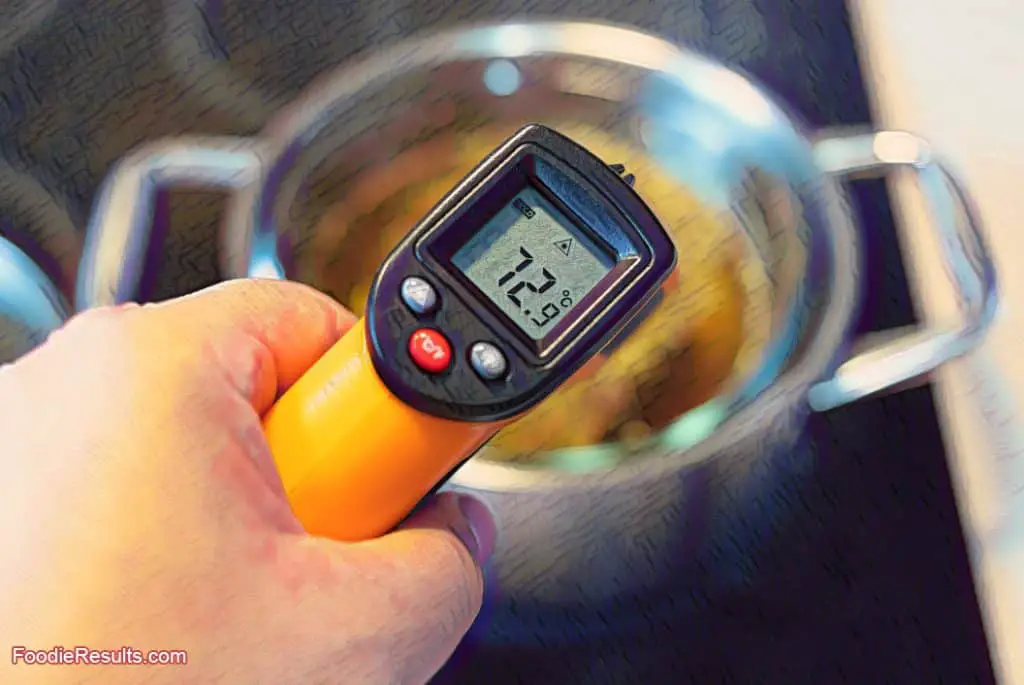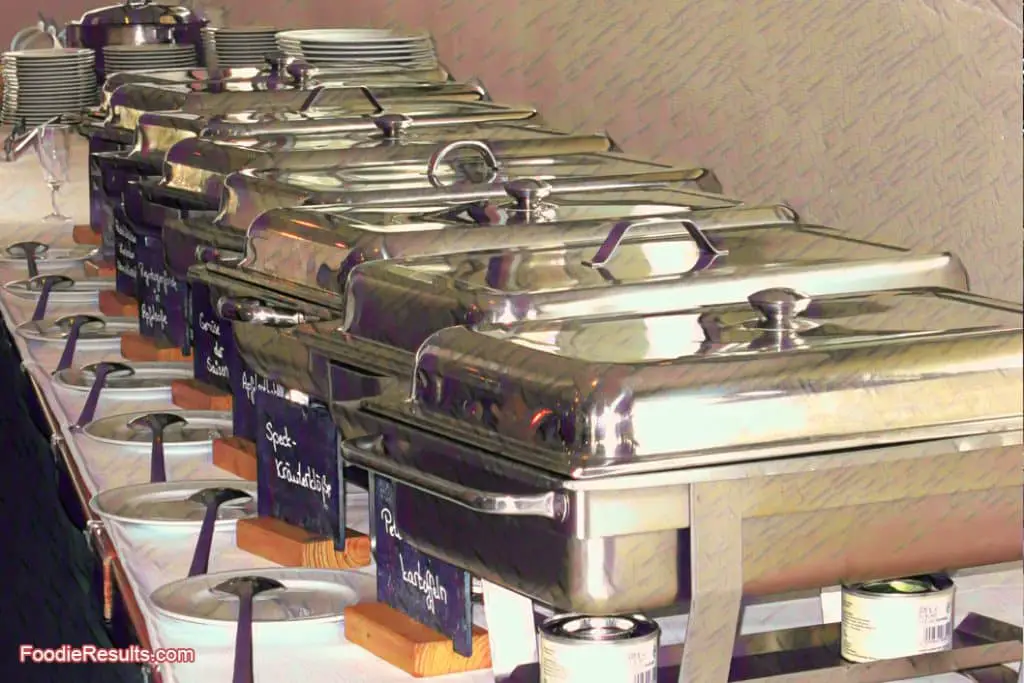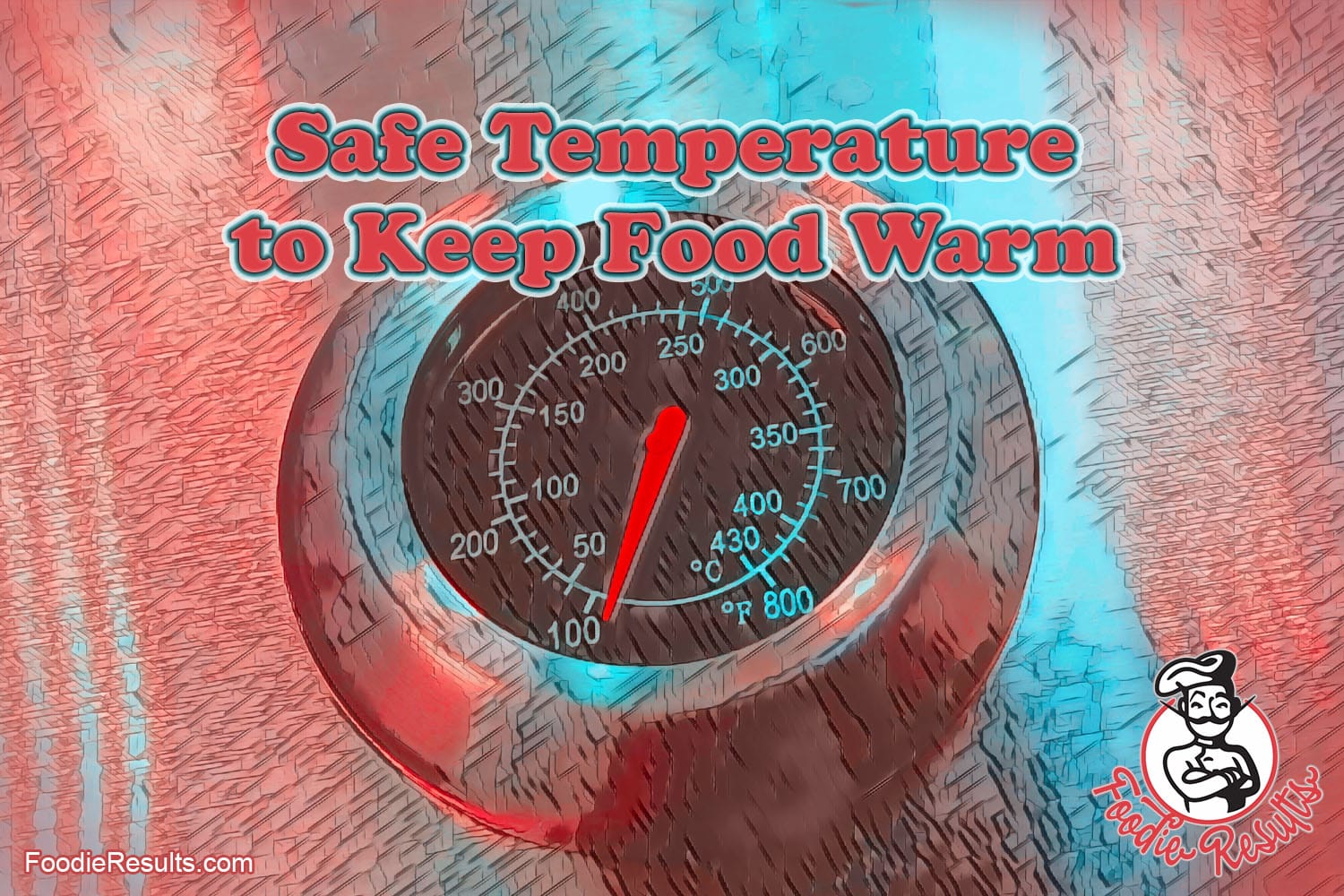For years I’ve wondered what the “safe” temperature to keep my food warm is, and I’ve even looked it up more than once. With upcoming family events that involve food, I need to know for sure; therefore, I’m going to find out and put all the information about safe food temperatures right here!
Answer: The FDA recommends that food be kept at 140°F when you want to keep it warm for an extended period or event. Warm enough to keep bacteria at bay and not so hot as to keep cooking the food.
Something else interesting I learned is many foods have minimum safe temperatures during cooking. I thought it was 165°F across the board; however, it ranges from 145°F to 165°F.
Now that we have the base answer, when I was looking this up, I came across some other interesting questions I wrote down.
Will 170 Degrees Keep Food Warm?
Setting your oven or device to 170°F for some foods is okay. The goal is to keep the internal temperature of the food at 140 degrees minimum . Some caterers like keeping the internal temperature a little higher for different events to keep things safe.
. Some caterers like keeping the internal temperature a little higher for different events to keep things safe.
Generally, if the food is going to be out for a long day, it is not typically that bad to have it a little extra warm, even if it gets cooked a little extra, but you should consider this when planning your event. NEVER undercook food. When we make cheese dip for a party, I like it a little on the “well done” side.

Check out the next section. I found several suggested ways to keep food warm. Some I had not heard of before, but others I’ve used several times without even realizing how effective they are!
How Can I Keep Food Warm for Hours?
All the systems mentioned below are designed to keep your food warm that is already hot! You should never use these methods to heat your food from cold.
Finding the answers to this question opened my eyes to a world of possibilities. One of my favorite new methods for keeping food warm for an extended period is using an ice chest, but instead of ice packing, the hot food is packed in there while waiting to serve. This method can also be an excellent way to transport your contribution to the family reunion meal gathering.
Using this method, you can easily keep hot food from the stove, oven, or grill warm for a couple of hours. A Bluetooth thermometer connecting to my phone allows me to monitor the temperature closely.
Another possibility is to use catering burners, sometimes called buffet steamers or chafing dish burners. The general idea is to use some physics and control the temperature allowing the food to stay serving hot for a very long period.
These little burners are called that because they actually burn. Most of the time, they are small cans that hold a bit of fuel and have a wick, but they do not always have a wick. You open them up and light them, and then they will burn at the bottom of the pan to keep the food warm. Often, water is put into the pan between the food and the flame. This keeps the food from direct contact with the high point of the flame, heating the water buffer instead.

As a general rule, 5-6 hours will be the upper end of the amount of time you might want to use this system. You can even get a 6-hour fuel can option, but 45-minute and 2-hour cans seem the norm.
A third popular option is something you might already have in your kitchen. Most crockpots, slow cookers, Foodi Tender Crisp cookers, and pressure cookers have a keep-warm function that will kick in after the food is cooked. Some of these appliances have keep-warm buttons!
Using this option is easy if you cook your dish in that appliance as it will kick over to the keep-warm function, but with the units that have a button option, you will be able to turn on the keep warm and transport a dish in the appliance. Ensure you warm up the appliance before putting your container in there.
Last, you can also use your oven. Remember, the goal is to keep the temperature of the food internally at 140 degrees. Typically this means you should set the temperature slightly above 140 degrees. To test, you can use something like a probe thermometer, meat thermometer, or something like my Bluetooth thermometer, which is designed with a long temperature-proof cable to allow the probe to sit in the oven and have the unit safely on the counter.
Keep reading to learn more about keeping your food warm in the oven.
Can I Use My Oven to Keep Food Warm?
Yes! As we looked at in the previous section keeping food warm in your oven is perfectly acceptable as long as you remember that the internal temperature of the food needs to be 140°F.
For most ovens, between opening and closing the door, the efficiency of the stove in general, and potentially the wrong oven temperature, I recommend you set the temperature higher than 140°F. Most likely, 160-170°F will be a good setting, and often I use 200°F if I plan to eat my food soon.

Keep reading the last two sections are about celsius and serving temperatures.
What Temperature to Keep Food Warm Celsius?
I figured that my friends in the rest of the world might want to keep their food warm, so I did some google math and got an easy answer. 60°C. A nice round number. 60° Celsius is equivalent to 140° Fahrenheit.
At What Temperature Should Hot Food Be Served?
This last section I found a little surprising, and I might do an entire article on this at some point in the future; however, it makes intrinsic sense.
You should often serve food to the table at a higher temperature than the “keep warm” temperature we have discussed. Many of the optimal serving temperatures are equal to the optimal cooking temperature.
I found this shocking until I thought about the meals I enjoy the most. Many of my favorite and most filling meals are served extra hot!

Generally, the food should leave the kitchen at around 145 degrees, and for some meats, as high as 165 degrees.
This makes sense to me, though, because generally, where these recommendations are made at restaurants and other places, food is served in volume, and people may wait several minutes before they get their food. In other cases, most people want to eat their food while still hot.
Further, the FDA recommends that eggs and egg dishes, such as quiches or souffles, if cooled or chilled for storage, should be thoroughly reheated to 165°F before serving!



